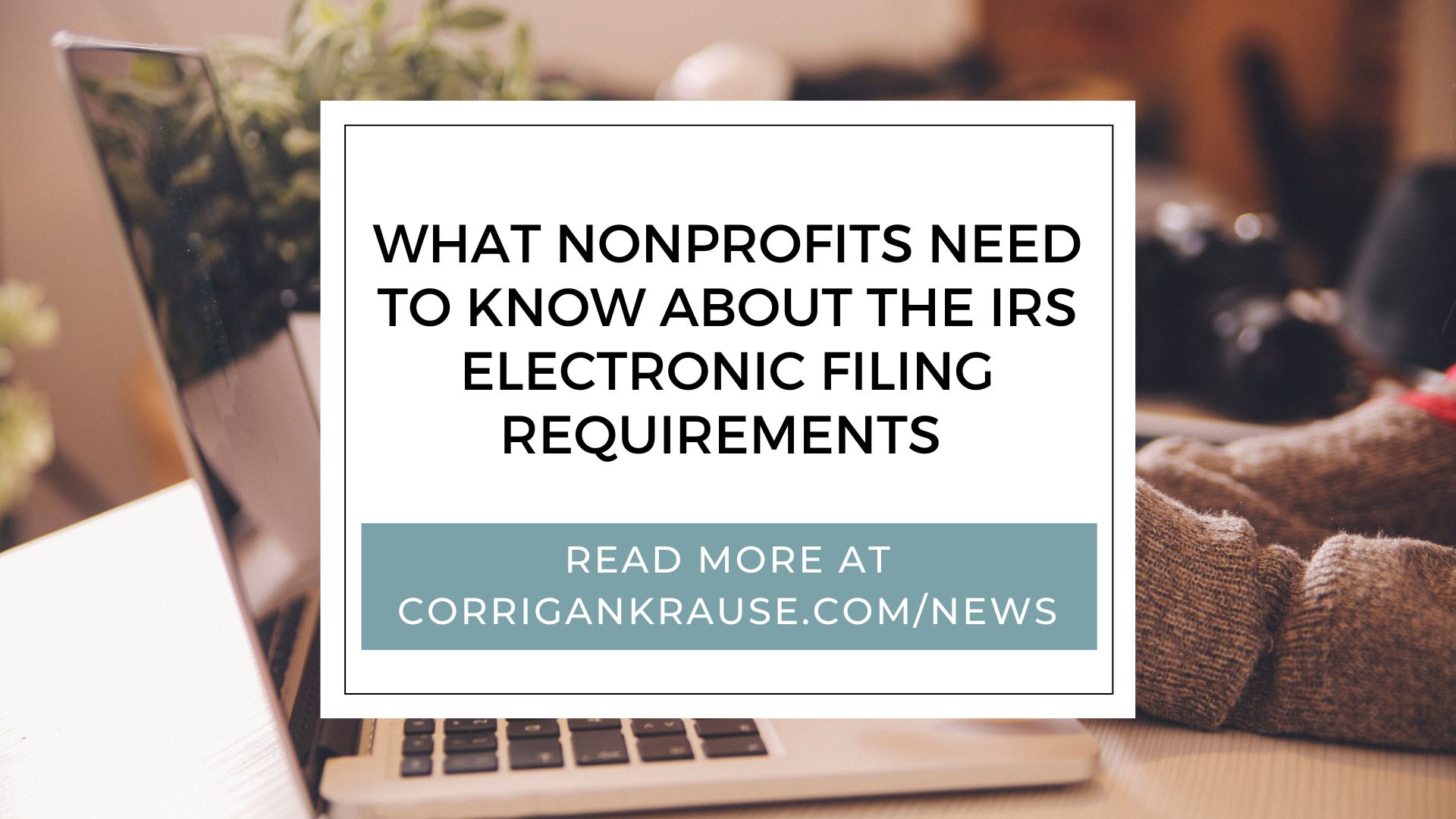
In February 2023, the IRS published a final rule that expands electronic filing requirements to include nearly all taxpayers and nonprofits that file at least 10 information returns and other documents during a tax year. This includes many of the returns nonprofits commonly file, including 1099 forms.
What are Nonprofits Required to File Electronically?
Tax-exempt organizations are already required to file certain returns electronically. A law passed by Congress in 2019 made electronic filing mandatory for Form 990, the Return of Organization Exempt from Income Tax, as well as certain related forms. Small nonprofit organizations with annual gross revenue of no more than $50,000 may e-file Form 990-N. Certain other nonprofits may e-file Forms 990-EZ, 990-PF or 990-T.
The updated IRS e-filing regulations require organizations that file a total of at least 10 information or tax returns to use electronic filing for all of these returns. Previously, the threshold for mandatory e-filing was 250 returns, making this a significant update that affects most nonprofits.
The IRS Updated How it Counts Returns
Prior to the 2023 regulation updates, taxpayers and nonprofits were only required to use electronic filing if they filed more than 250 of a particular type of form. If, for example, a nonprofit filed 249 returns using Form A and 251 returns using Form B, they were only required to use e-filing for Form B.
Under the new system, the IRS counts all of the returns that an organization is filing. If the organization files six returns on Form A and five returns on Form B, they will have to use electronic filing since the total number of returns is 10 or greater.
The regulation considers all returns that an organization files for a tax year, including those not required to be filed electronically. If an organization is filing a total of 12 returns, but four of them are excluded from the e-filing regulation, the organization must still e-file the other eight.
Which Returns Does the Updated Regulation Cover?
The e-filing requirements include “returns of any type,” including:
- Information returns, such as forms W-2 and 1099;
- Income tax returns;
- Employment tax returns, including Forms 940 and 941; and
- Excise tax returns.
Nonprofit organizations with employees should plan for e-filing employment-related returns. Even if an organization has fewer than 10 employees, they may still have to file a total of more than 10 returns to address all of the requirements related to issues like payroll taxes.
The e-filing requirements can become especially complex when employee benefits, such as retirement plans, are involved. The regulation generally requires organizations to e-file returns like Form 5500, Form 8955-SSA and Form 5330. Each organization should consult with a tax professional to get a better sense of their specific obligations.
The IRS has an online portal to help organizations e-file returns using various types of Form 1099.
Corrigan Krause Can Help Nonprofits Navigate IRS Filing Requirements
IRS filing requirements can be complicated, confusing and time-consuming for nonprofit organizations. They are also critically important to keep nonprofits in good standing with the IRS and maintain their tax-exempt status. The Nonprofit team at Corrigan Krause can help. Email us at info@corrigankrause.com for more information on becoming a client.


